
 China Tours
China Tours Tibet Tours
Tibet Tours China Theme Tours
China Theme Tours Off The Beaten Track
Off The Beaten Track Yangtze Cruises
Yangtze Cruises China Trip Planner
China Trip Planner Travel Agents
Travel Agents


We had a wonderful time in Tibet. We have learned a lot about this unique destination because of the wonderful guide Degyi who is so knowledge and always available towards our tours. We stayed at the Shangri-La Hotel Lhasa, and we would never imagine a Tibet travel could be so nice and amazing without the help of Degyi.
Also, thanks a lot to our Tibetan driver Mr.Wongdun for his safe driving and a good sense of service along the way.
We shall return Tibet in the near future!
P.B. and A. A - Europe
Tibet Travel
June 2018 (Private Tibet Journey from Kathmandu)

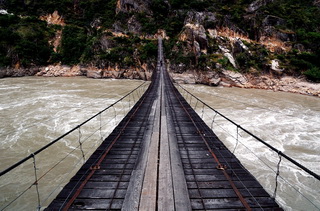 The natural scenery of Three Parallel Rivers is located at the deep narrow valleys in the mountainous areas of the southern part of Qinghai-Tibet Plateau, in southwest China's Yunnan Province. The whole reserve is composed of the drainage areas of the three great rivers - Nu River, Lancang River, Jinsha River, and the mountains around, covering an area of 41,000 square kilometers in total. This is also the convergence of three large geographical regions - East Asia, South Asia and Qinghai-Tibet Plateau. As a rare representative area of alpine topography as well as the reflection of its evolution, this is one of the few places in the world with the most abundant biological species. It covers three autonomous prefectures and cities, including Lijiang City, Diqing Tibetan Autonomous Prefecture and Nujiang Lisu Autonomous Prefecture of Yunnan Province. On this piece of land, there are high mountains, deep valleys, snow-capped peaks, large glaciers, lakes with potable water, wild forest, marshy grassland, rare animals and precious plants. In a word, there is a lot to see here. In the meanwhile, it is also the inhabiting place of 16 ethnic groups. Different nationalities, languages, religions and customs co-exist, making it a special and unique region rarely seen in the world. For thousands of years, the 16 ethnic groups here have lived quite harmoniously with each other.
The natural scenery of Three Parallel Rivers is located at the deep narrow valleys in the mountainous areas of the southern part of Qinghai-Tibet Plateau, in southwest China's Yunnan Province. The whole reserve is composed of the drainage areas of the three great rivers - Nu River, Lancang River, Jinsha River, and the mountains around, covering an area of 41,000 square kilometers in total. This is also the convergence of three large geographical regions - East Asia, South Asia and Qinghai-Tibet Plateau. As a rare representative area of alpine topography as well as the reflection of its evolution, this is one of the few places in the world with the most abundant biological species. It covers three autonomous prefectures and cities, including Lijiang City, Diqing Tibetan Autonomous Prefecture and Nujiang Lisu Autonomous Prefecture of Yunnan Province. On this piece of land, there are high mountains, deep valleys, snow-capped peaks, large glaciers, lakes with potable water, wild forest, marshy grassland, rare animals and precious plants. In a word, there is a lot to see here. In the meanwhile, it is also the inhabiting place of 16 ethnic groups. Different nationalities, languages, religions and customs co-exist, making it a special and unique region rarely seen in the world. For thousands of years, the 16 ethnic groups here have lived quite harmoniously with each other.Every kind of landscape to be found in the northern Hemisphere other than desert and ocean can be found here including magnificent snow-capped mountains and glaciers, precipitous Danxia cliffs and wonderful Karst formations.
The region has 118 snow-capped mountains over 5,000 meters above sea level, varying widely in form. With them come many hectares of untouched forest and several hundred glacial lakes.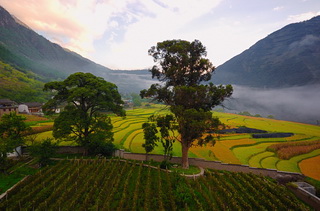
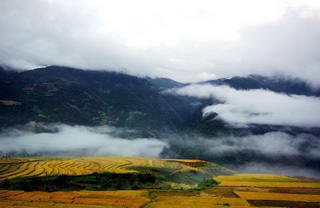
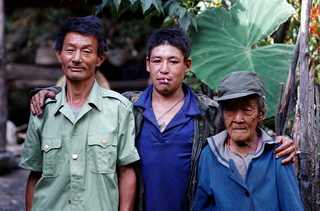
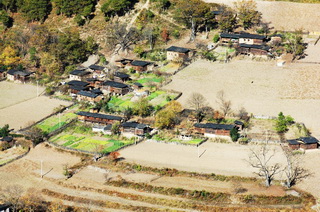
The Danxia landforms in the Laojun Mountains in the Lijiang Area, picturesque in their forest setting, are both the biggest and the best-formed examples of this geomorphology in China. In places, the red cliffs have weathered away to leave formations said to look like tortoises. On the aptly named thousand tortoise mountain, one can imagine at first a single large tortoise and then on closer inspection see it to be made up of the regular ranks of thousands of small tortoises.
First among China's 17 key bio-diversity areas, the site with its precious gene bank, has been acclaimed as being of world class importance. Though accounting for less than 0.4 percent of the area of the country, the region plays host to more than 20 percent of the country's most important plants and 25 percent of its animal species. Today the region is home to 77 animals under state-level protection including the Yunnan golden monkey, antelope, snow leopard, Bengali tiger and black-necked crane. It has 34 kinds of plants under state-level protection including the China fir (Cunninghamia lanceolata), the spinulose tree fern (Cyathea spinulosa) and the Chinese yew (Taxus chinensis).
Every year when spring comes again, the region becomes a sea of flowers. There are 200 kinds of azaleas, nearly 100 kinds of gentian (Gentiana scabra), and primroses, Scrophylariaceae, Cypripedium and lilies.
China Trip Planner | Travel Agents | About Us | Why Us | Contact Us | How to Pay | How to Book - Terms & Conditions | Site Map
Copyright © 2010 - 2030 All Rights Reserved.


 0086-28-85711328
0086-28-85711328 0086-28-85546015
0086-28-85546015



